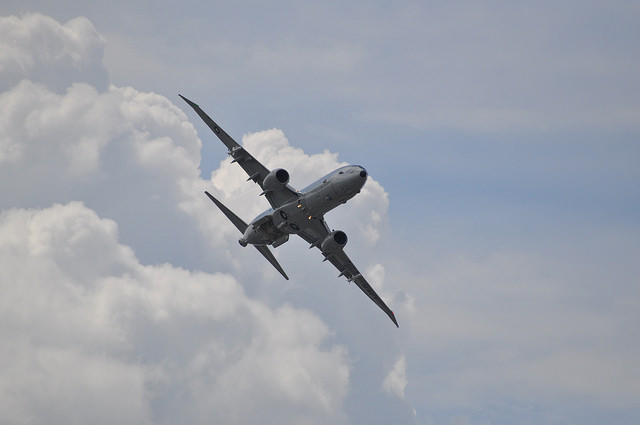A key aspect of the new Defence White Paper is significant enhancement to ADF force structure. In previous White Papers, a list of four principal tasks has shaped Australian military strategy. In the new White Paper, those four tasks have become three ‘strategic defence objectives’ (see paragraph 3.3), with once again, the defence of Australia as the first; securing maritime Southeast Asia and the Pacific the second; and contributing to stability across the Indo–Pacific region and protecting a rules-based global order the third.
In this sense, the boost to the ADF’s joint maritime expeditionary capabilities is apt for the emerging strategic outlook where the ADF’s traditional military–technological edge is more openly contested. The commitment to acquire twelve future ‘regionally superior’ submarines is emphasised as the centrepiece of the ADF’s emerging force structure. The new boats will be acquired under a rolling acquisition process beginning with the down-select from the Competitive Evaluation Process this year, with the first submarines entering service by the early 2030s. The acquisition of the new submarines will be complemented with a review of evolving strategic circumstances and developments in submarine technology in the late 2020s which will consider the case for other specifications, though it’s unclear exactly what that means.
Given that the new boats won’t be entering service until the early 2030s, any need to shift gears and change direction so late in the program would only resonate with later builds in the out-years of the project. That capability will need to encompass network-centric capabilities if it’s to fully enable the boats to employ unmanned underwater vehicles (UUVs) and use deployable acoustic arrays as part of a complete Theatre Anti-Submarine Warfare capability.
Navy also gets nine ASW-focused future frigates under SEA 5000 from the late 2020s. They will complement the SEA 4000 Hobart-class AWDs, as well as twelve Offshore Patrol Vessels (OPVs), with the latter undertaking a broad range of lower-end tasks such as border protection and patrol missions. Together with the acquisition of the three Hobart–class AWDs, and the recent boost to the ADF’s joint amphibious capability through the acquisition of the two Canberra-class LHDs, Navy has done nicely out of this White Paper (as was the case with the previous few). The RAN is set to take the lead as Australia’s most visible response to a more challenging strategic outlook.
The Royal Australian Air Force also has a large slice of the spending pie, with Australia’s maritime surveillance capabilities to be enhanced for countering both undersea and surface threats. A total of 15 P-8A Poseidon maritime patrol aircraft by the late 2020s, and seven MQ-4C Triton maritime surveillance UAVs from the early 2020s will replace the aging AP-3C Orion MPA fleet, and will join the short-range tactical ship-launched UAVs and the recently acquired 24 MH-60R naval helicopters equipped with dipping sonar capabilities. In considering the strike and air combat capability, the White Paper makes it clear that Australia remains committed to acquiring 72 F-35A Lightning II Joint Strike Fighters from 2020 to replace the Classic F/A-18A/Bs which are approaching the end of their useful life. But the language used to explore the replacements for the current 24 F/A-18F Super Hornets is interesting, and worth quoting directly:
‘Options to replace the Super Hornets in the late 2020s will be considered in the early 2020s in light of developments in technology and the strategic environment and will be informed by our experience in operating the Joint Strike Fighters.’
That’s certainly not an iron-clad commitment to an additional 25 F-35As as envisaged under AIR 6000 Phase 2C, and opens up prospects for alternative options. As noted by ASPI’s Andrew Davies and James Mugg in a recent submission to the F-35 Senate Inquiry, the risk of delays to the F-35 brought about by developmental challenges could open up the prospect for an additional tranche of Super Hornets, and reduced numbers of F-35s. Furthermore, as I suggested recently, with the US’ Sixth Generation Fighter program soon to get underway, it begs the question of whether those 24 F/A-18Fs might be replaced sometime after 2030 by something much more capable than even additional F-35s. The White Paper also refers to acquiring ‘advanced air defence and high-speed long-range strike weapons for the air combat fleet capable of attacking land and maritime targets.’ (4.44)
The Army gets some extra teeth too. A new capability that leapt out of the White Paper is the decision to improve maritime and land force strike capabilities through the acquisition of ‘deployable land-based anti-ship missiles to support operations to protect deployed forces and vital offshore assets such as oil and natural gas platforms.’ (4.46) Government also holds open the option to acquire and deploy in-theatre missile defence capabilities, and will acquire medium-range ground-based air defence capabilities. For Army, new long-range rocket capabilities with operational ranges of up to 300km will offer fire support for ground forces. Most significant though was a decision to acquire medium-altitude unmanned aircraft—armed drones. These will give Army their own organic fixed-wing armed reconnaissance capability. Together with new rotary wing armed reconnaissance helicopters to replace the 22 ‘Aussie Tiger’ ARHs, they will significantly increase Army’s ability to conduct mobile high intensity operations of the sort that might be expected in a joint expeditionary deployment.
The 2016 Defence White Paper force structure suggests significant advances in capability, and it appears to be fully funded. But the key challenge is whether those capability choices will be sufficient in the face of a rapidly changing strategic outlook. Many of these capabilities, won’t appear until later in the next decade and the subs will not appear until early in the 2030s. Defence can’t rest on its laurels now that this report is finished, and events may drive strategic change faster than force structure can evolve.


